Katie Vernon: Four young Hopi Indian women grinding grain, c. 1906, photo by Edward S. Curtis…

The Hopi Native Americans are a cultural group often referred to as “the oldest of people” by other Native American tribes. In his Book of the Hopi, American writer Frank Waters says that they “regard themselves as the first inhabitants of America” and that “their village of Oraibi is indisputably the oldest continuously occupied settlement in the United States.”
The Hopi are mainly agricultural people who live in the American Southwest, mainly in Arizona where today their Hopi reservation covers a land area of over 1.5 million sq mi. They cultivate dozens of varieties of corn, beans, pumpkins, cotton, sunflower, and squash which they also use for producing tools and instruments.

Hopi girls
The Hopi are widely known for their spirituality and beliefs rooted in Animism. They believe in powerful ancestral spirits or deities called Kachinas. They can be animals or natural elements that possess the magical power of healing, bringing rainfall, and protecting the Hopi tribe.
“In spirit and in ceremony, the Hopis maintain a connection with the center of the earth, for they believe that they are the earth’s caretakers, and with the successful performance of their ceremonial cycle, the world will remain in balance, the gods will be appeased, and rain will come.” – The Wind Won’t Know Me: A History of the Navajo-Hopi land dispute by Emily Benedek, published in 1992.
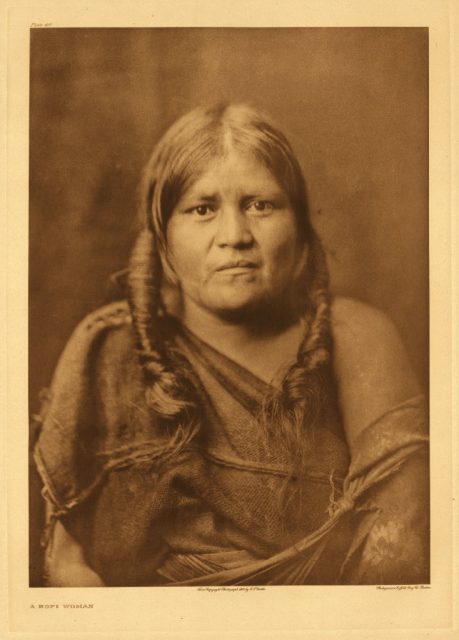
Hopi woman, 1922. Photo by Edward S. Curtis
The Hopi tribe are the guardians of their rites and knowledge of their ancestors. Their ceremonies take place in semi-underground chambers called kivas. During their sacred rituals, the Hopi wear masks and costumes to impersonate kachinas.
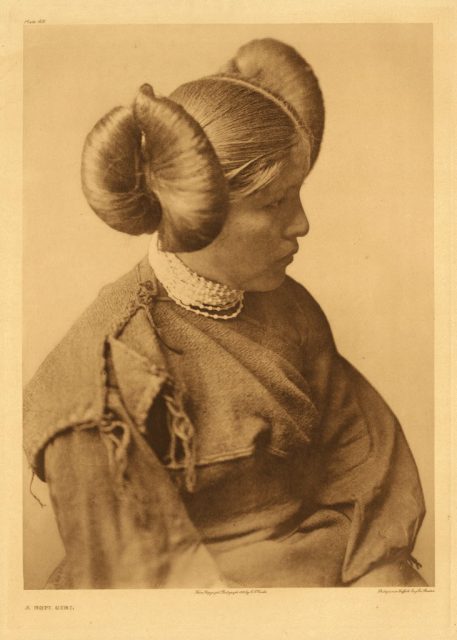
Hopi girl, 1922. Photo by Edward S. Curtis
The entrance to the kivas is through a tiny hole on the surface and symbolizes the gate to the underworld, while a ladder moving up above an opening on the roof represents the pathway to this world.
Today, there are kivas in all traditional Hopi villages, which count 12, and are situated just below the central square.
Not many details about the rituals and ancestors of the Hopi are certain because they tend to carry them in great secrecy.
It is believed that they descended from the Ancestral Pueblo, just like other Native Americans inhabiting the Southwest (not counting the Navajo with whom the Hopi have had a long history of disputes).
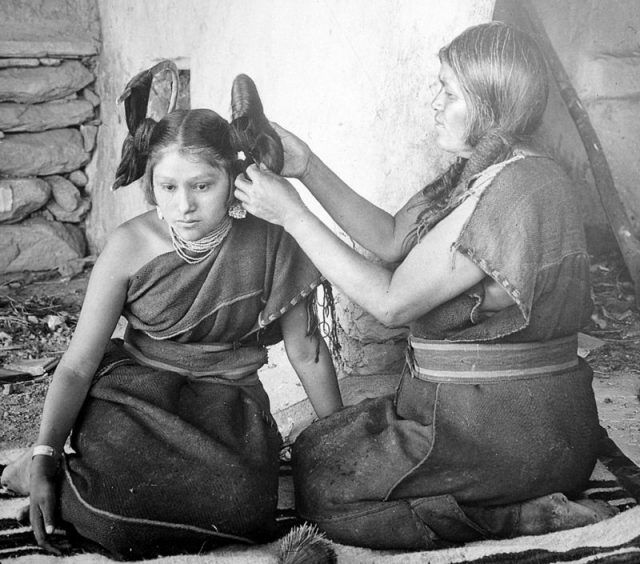
Hopi woman dressing hair of unmarried girl, c. 1900. Photo by Henry Peabody
In their stories and traditional beliefs, the Hopi lived in many different places before they finally settled on this world. They consider this World to be the Fourth and they arrived here following a difficult journey through which they searched for a home.
They believe that the First World was destroyed by fire, the Second one by Ice, and the Third World by floods. They were finally led to the Fourth World by their deities.
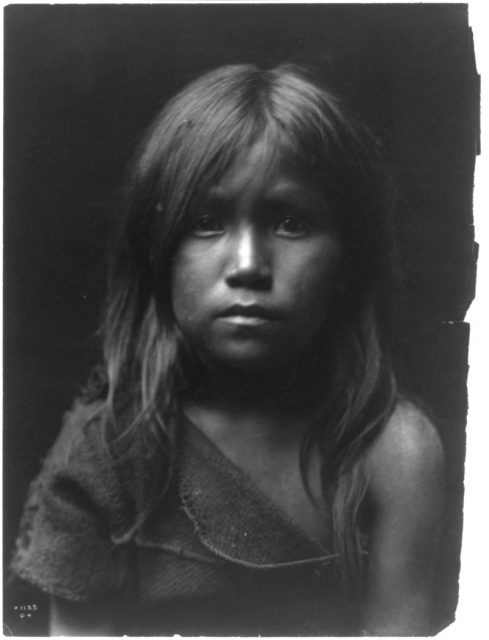
Hopi girl. Photo by Edward S. Curtis
Their oral history stretches back thousands of years which is a big reason they are believed to have one of the oldest living cultures in the world. Archaeology has affirmed their presence in the Southwest for thousands of years, and possibly longer.
They introduced chieftains to their villages when they started growing in size, around the 14th and 15th centuries, to improve coordination of their daily activities.
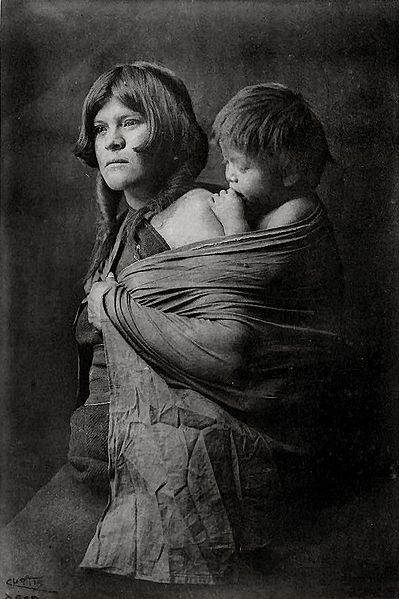
Hopi mother, 1921
Despite their savage dispute with the neighboring Navajo, the Hopi’s violent history began with their first contact with the Spaniards who disturbed the tribe’s way of living.
They started sending missionaries from Spain and although the Hopis pretended to accept Christianity, they have still continued their own rituals and blended elements of both.
















































